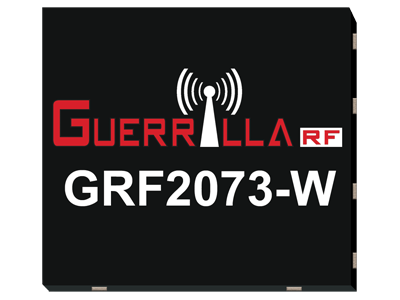Guerrilla RF has introduced an ultra-low noise amplifier (LNA) for high volume automotive applications, such as the first stage in a satellite radio or GPS receiver.
AEC-Q100 qualified, the GRF2073-W covers 2.3 to 2.7 GHz, with typical performance of 0.4 dB noise figure, 20.5 dB gain and 20 dBm output power at 1 dB compression at 2.3 GHz.
The LNA uses a single set of external matching components and is typically biased at 5 V, drawing 70 mA. Biasing is flexible, however, with a supply voltage range from 2.7 to 5 V and quiescent current from 20 to 100 mA. The current can be controlled independently from the bias voltage, allowing device efficiency to be optimized as required.
The GRF2073-W is offered in a standard 2 mm x 2 mm DFN-8 package, sharing a common pin-out with other devices from Guerrilla RF.
GRF2073-W samples and evaluation boards are available. Unit pricing in 10,000 quantities is $1.25.
“Guerrilla RF is proud to offer this new amplifier for automotive applications, which addresses an industry need for a cost-effective, first stage LNA delivering outstanding RF performance with low power consumption over a wide frequency range. The device’s ultra-low noise figure capability is critical for achieving the difficult cascaded NF specification for digital audio satellite radio service (SDARS) receivers in the 2320 to 2345 MHz band. Furthermore, simple matching along with the 2 mm DFN-8 package results in a compact application footprint.” — Alan Ake, vice president of applications and technical marketing at Guerrilla RF
Automotive Antenna Market Outlook
According to Technavio, the global automotive antenna module market is forecast to grow at a compound annual growth rate of 7.7 percent, to more than 1.5 billion modules by 2021. This growth is driven by the
- Rise of wireless connectivity in vehicles.
- Growing adoption of embedded cellular connectivity.
- Move toward autonomous vehicles.
- Economies of scale in satellite antennas.
- Legislative push to have eCall in cars.
- Growing popularity of truck platooning.
Also, the average age of car buyers in developed regions like the U.S. in increasing, with buyers having higher disposable incomes.

